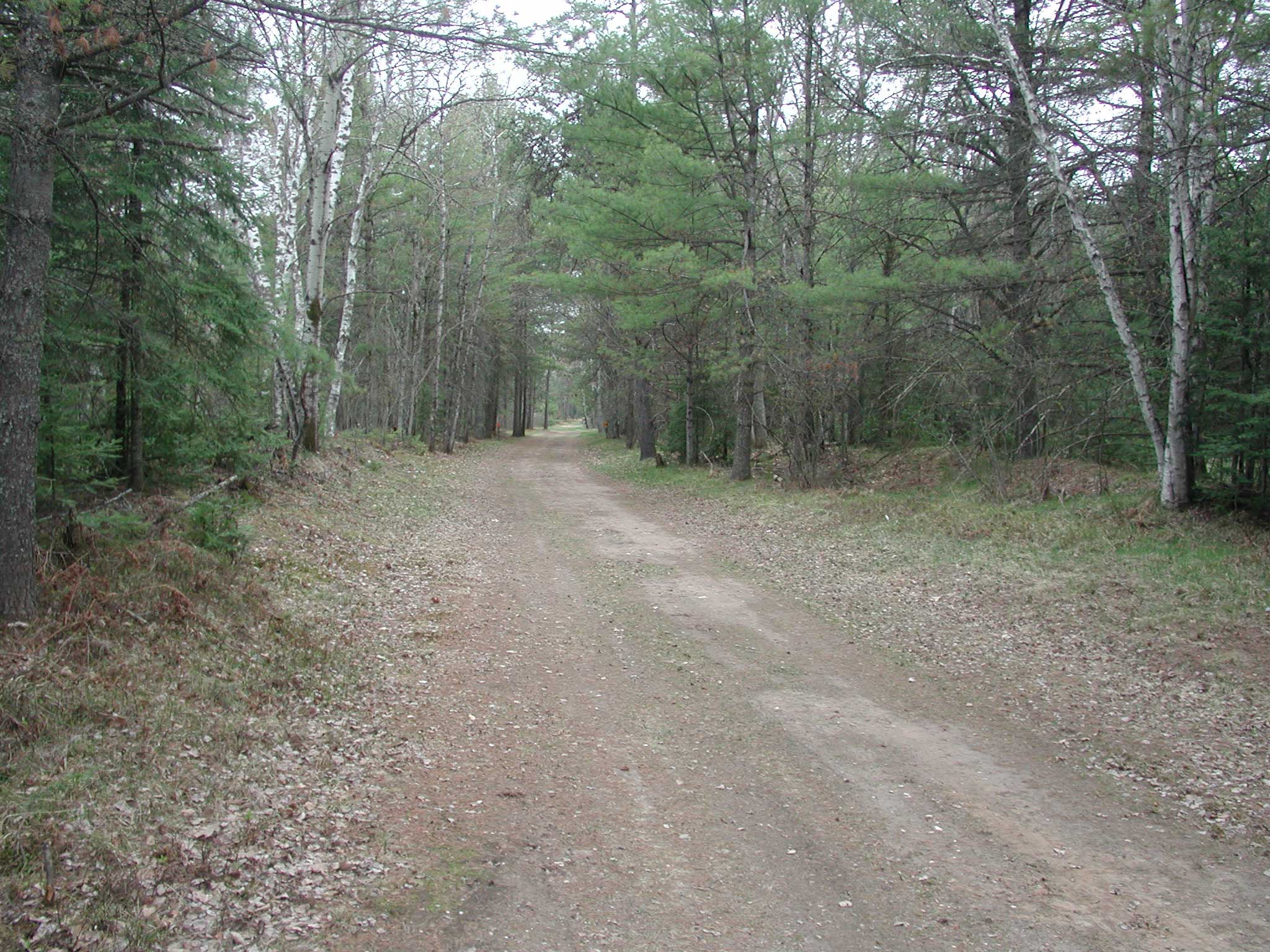The keys to developing a trail and road network that meets your needs now and into the future.
My wife’s grandfather is a retired farmer in the Tomah area with a small woodlot that he has been extracting firewood from over the past seven decades. For much of that time, he has used his trusty Ford tractor and a trailer to haul firewood back to the house over a well established trail system. As you might imagine, parts of the woodlot include some steep terrain, and there are trail segments that are nearly forty-five degrees. Needless to say, we have had some harrowing moments as the fully loaded trailer and tractor start to slide on the steep segments, but I am glad to say that we have managed to do our work without mishap. These instances have taught me some valuable lessons regarding trails and their layout on the landscape, and I would like to share some of those thoughts with you here.
The first thing I always recommend to folks looking into developing or improving their trail system, is to think about how you want to utilize the trails. What kinds of vehicles will be traveling on it and how fast do they need to go? What do you want to reach with the trail? Timber? Hunting areas? Sites for viewing? All of the above? If you can envision a time where there will be large and heavy equipment traversing your trails, then you need to install a robust tread for the wheels or tracks to ride on and a wide path with few sharp turns for easy navigation. If your use will be limited to smaller vehicles like cars or ATVs, then you have a lot more flexibility laying out paths and utilizing steeper slopes. And if you expect only foot traffic (hiking, snowshoeing, xc skiing), you might be able to venture into more vulnerable areas of your forest by maintaining smaller, less constructed trails. Finally, consider what kinds of equipment you will be using to maintain the trails you are building. If all you have is a regular riding lawn mower with a thirty-six inch deck, then you might be spending all your free time keeping your trails mowed.
One of the biggest mistakes I see people make is to try and keep too many trees bordering their trail. More often than not, they forget that their trail might be covered in snow or wet from dew or rain making it slick. The result being a heavily laden or fast moving vehicle sliding into a tree causing damage or injury. It is especially important to widen your trail where there is any kind of slope or the trail turns or curves. Also, prune overhanging branches so that you are not damaging your vehicles or the trees every time you drive your trail. And remember, a few feet of snow means the branches should be pruned higher up.
Not maintaining the trail surface is another common mistake being made. Some landowners will cut a trail through their forest and think their work is done, but this is far from the case. Even trails over flat terrain can suffer from ruts and erosion due to overuse and rain. Seeding trails with grasses and keeping them mowed will help to hold the soil in place. Turns and curves in the trail might require the addition of crushed gravel to ensure the tread is firm and does not get displaced.
You might need to raise the tread where the soil is wet much of the year due to poor drainage. A simple solution is to use a series of six to ten inch logs laid side-by-side on these areas. This “corduroy” will raise the tread and allow water to flow between the logs. This is a temporary solution as the logs will decay due to use and break down from the water.
Finally, rain water flowing over the surface of your trail can quickly become a problem if not managed correctly. Diverting the water off of your trail as fast as possible is the best solution, and waterbars are a simple and effective tool to do that. A waterbar is an obstruction made of rocks, earth, or a log placed across a trail at a thirty to forty-five degree angle. Waterbars will wear out over time and need to either be replaced or refurbished from time to time.
